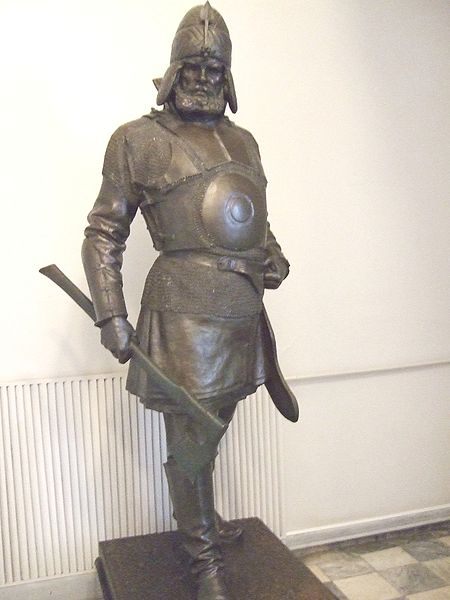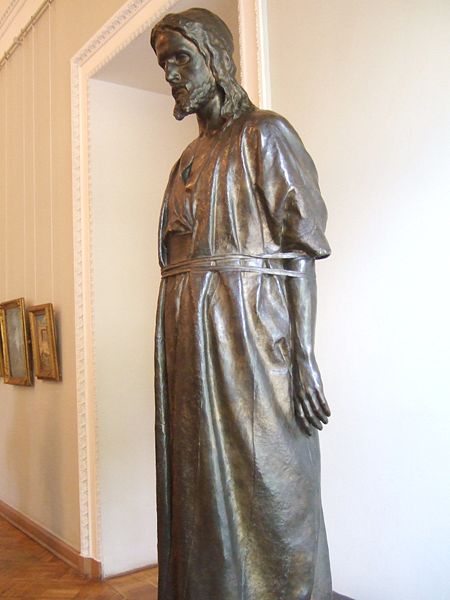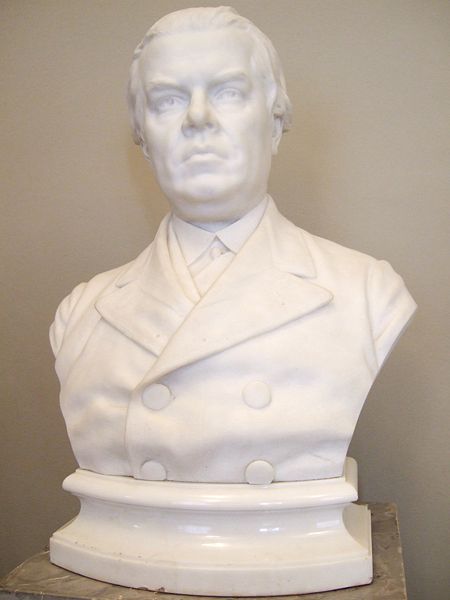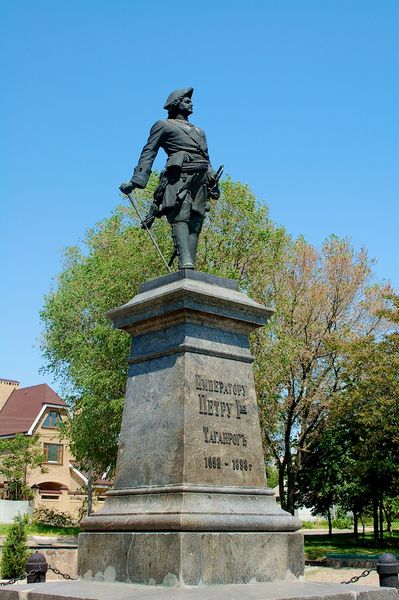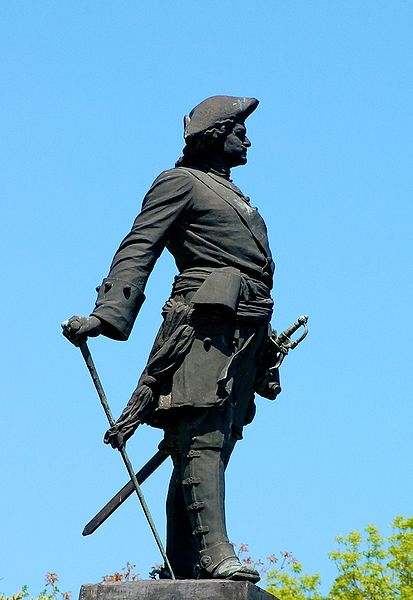<Back to Index>
- Philosopher Georges Eugène Sorel, 1847
- Sculptor Mark Matveyevich Antokolski, 1843
- Song Emperor of China Huizong, 1082
PAGE SPONSOR
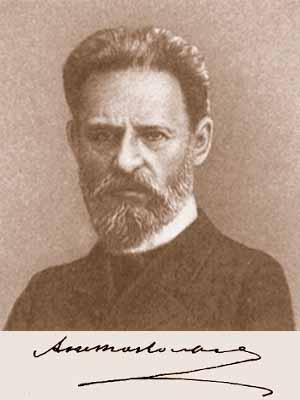
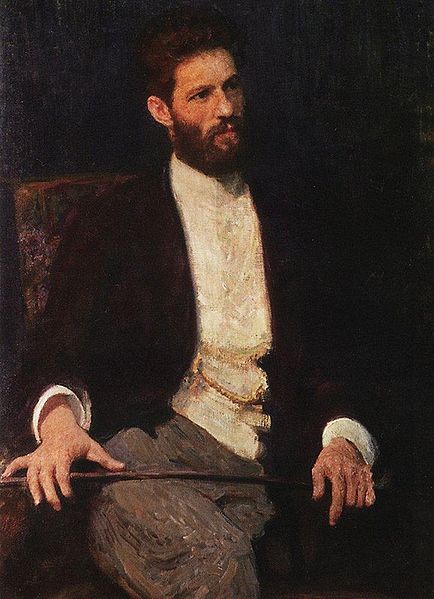
Mark Matveyevich Antokolski (Марк Матве́евич Антоко́льский in Russian; 2 November 1843 – 14 July 1902) was a Russian sculptor who was admired for psychological complexity of his historical images and panned for occasional lapses into sentimentalism.
Antokolski was born in Vilna, present day Vilnius, Lithuania, as Mordukh Matysovich Antokolsky. He studied in the Imperial Academy of Arts (1862 – 68) at St. Petersburg. He first began with Jewish themes, statues: "Jewish Tailor", "Nathan The Wise", "Inquisition's Attack against Jews", "The Talmudic Debate".
From 1868 – 1870, Mark Antokolski lived in Berlin. His statue of Ivan the Terrible (1870) was purchased for the Hermitage by Emperor Alexander II of Russia. The latter approved his work and awarded the sculptor the title of Academic. Mark Antokolski believed that sculpture was a social and humane ideal. In order to improve his failing health, he moved to the Italian resorts in 1871 and settled in Paris six years later.
Every year Antokolski would come back to his native town of Vilnius during his summer holidays. Namely here he created his first significant work, high relief "A Jewish Tailor", during his summer holidays of 1864.
The work of the young sculptor provoked debate in the Academy in Petersburg. On 28 October 1864, the Council of the Academy decided to award Antokolski with the Small Silver Medal for the "Tailor" by the majority of votes.
While in Vilnius the following year, Antokolski created another high relief - "A Stingy Man," which is sometimes referred to as "A Stingy Jew Counting his Coins". The artist was born into a poor family and saw how his father's financial situation improved. The sculpture might have reflected Antokolski's feelings towards his native town of Vilnius, and firstly to his father. This work as well as the first sculpture was positively evaluated by Vasily Stasov who saw "the features of the simple truth, the things that, previously, nobody dared to think about in sculpture" in the works of the artist. In 1865, the high relief "Stingy Man" was awarded the Grand Silver Medal of the Academy. In later years the sculptor continued working on Jewish themes, which developed into complex, yet unfinished compositions: "Talmud Dispute" (1866 – 1868) and "Inquisition Attacks the Jews" (1868 – 1869). The "Inquisition" was M. Antokolski's last work on the Jewish topic in his student years.
According
to the review of the Art Academy, Antokolski was granted personal name
of honorary citizen "for wonderful knowledge of art" on 7 April 1870.
This fact was also entered into an archival record. Moreover, an
inscription remained that Morduchas was excluded from the revision
register of Antakalnis Jewish community as a person awarded the name of
an honorary citizen. In
1871 Antokolski started his first "Russian" sculpture, "Ivan the
Terrible", which made an enormous impression on all valuators and
connoisseurs of art. When Emperor Alexander II saw the sculpture he
asked to make its bronze copy and allocated the sculptor advance
payment of 4,000 roubles. Pavel Tretyakov ordered a marble copy for his
gallery. The funds received enabled the artist to resolve his personal
problems. In 1871 (in Vilnius) Antokolski got acquainted with Jelena
(Gene), daughter of a rich Vilnius merchant Judelis
Girðovièius Apatovas. The two married on 6 September 1872. Antokolski
used 4,000 rubles for the "Ivan the Terrible" to buy half of a big
house in Vilnius, the other part of which had previously belonged to
his wife. In 1876, upon his regular visits to Vilnius, Antokolski
rebuilt the house. After 1876, Antokolski was a rare visitor to his
native town due to illnesses, work, and exhibitions in Paris and Italy,
which took almost all of his time. However, the artist did not break
his links with Jewish life. Concern over his nation urged Antokolski to
return back to his work "Inquisition Attacks the Jews", started 30
years before in Vilnius. In Rome, Antokolski completed the statue of Peter the Great for Peterhof Palace in 1872, with its copies for Taganrog and Archangelsk. In 1878 Antokolski exhibited most of his works at the Paris Universal exposition, and received the Grand Prize. In 1880, the personal exhibition of the artist was held in Saint Petersburg,
and he was given the rank of professor. Mark Antokolski left for Paris
the same year, and stayed in the French capital until the end of his
life, apart periods on the Lake Maggiore, in northern Italy. He realised here the following works: "Spinoza" (1881), "Mephistopheles"(1884), "Yaroslav the Wise"(1889), "Nestor the Chronicler" (1889) and "Yermak Timofeevich" (1891). He
had also planned a monument to Catherine II in Vilnius. However, with
the chronic stomach disease getting more severe, the artist suddenly
died on 9 July (27 June according to the old calendar) in Frankfurt (Germany). The last work was completed by I. Ginzburg after the sculptor's death. The monument has not survived. It
was decided to bury Antokolski in Petersburg. The train with a special
carriage went via Vilnius where he was waited for. Mark Antokolski was
buried on 18 (6 according to the old calendar) July 1902 in
Preobrazhenskaya Cemetery in St. Petersburg.
